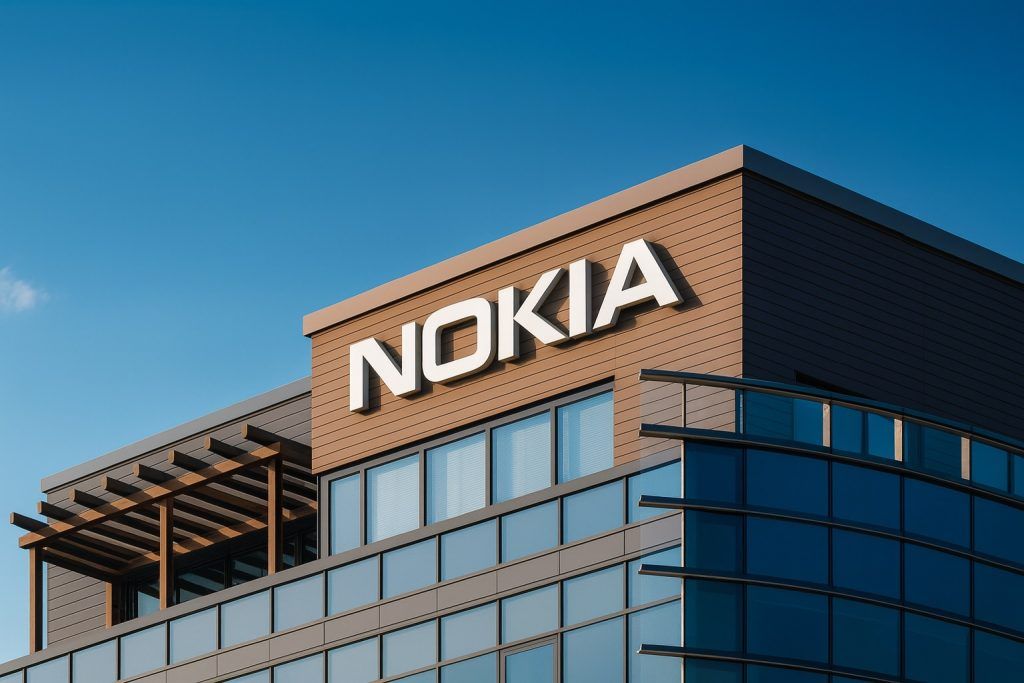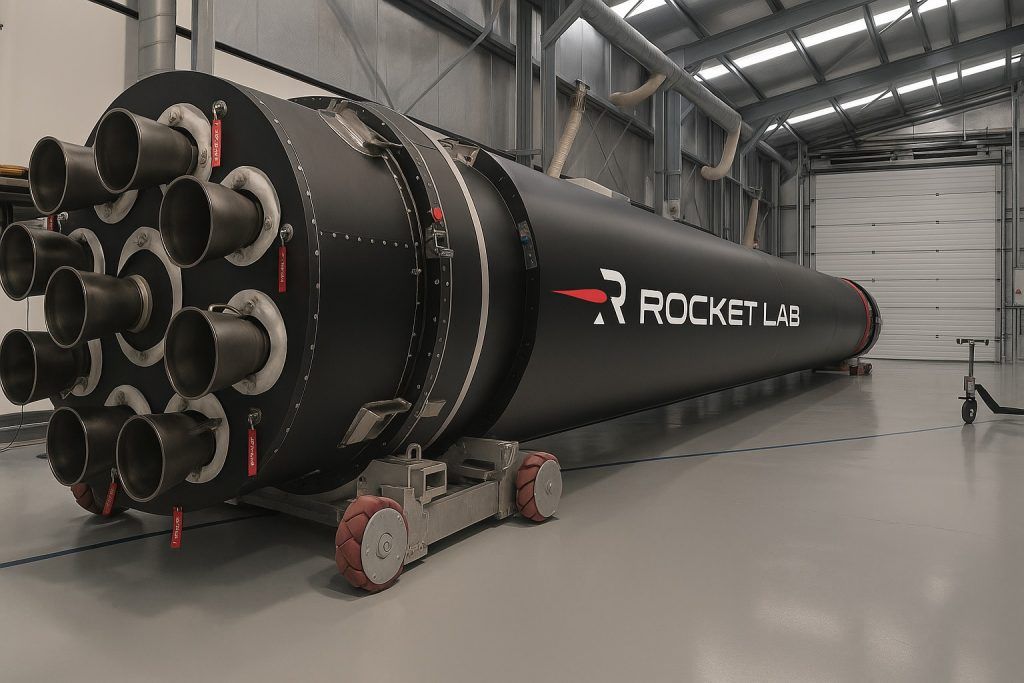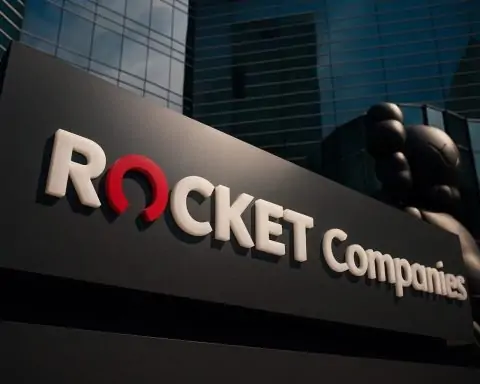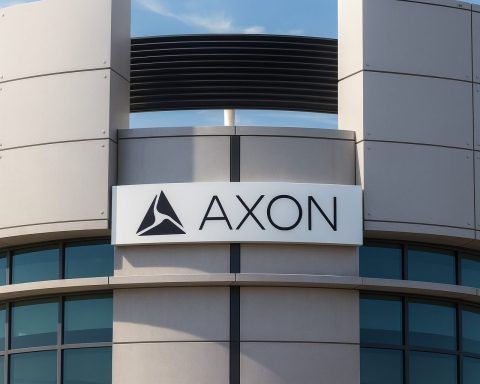- Stock Spike on AI News: Recursion Pharmaceuticals’ NASDAQ-listed stock (RXRX) surged ~16% on Oct 8, 2025, briefly touching about $6.08 after a dip the day before [1]. The company’s shares have been volatile — down roughly 30% year-to-date but rebounding on renewed investor interest in its AI-driven drug discovery platform [2] [3].
- AI-Driven Platform: Recursion is a clinical-stage “TechBio” firm using an AI and automation platform (“Recursion OS”) to speed drug discovery [4] [5]. Its technology claims to compress timelines – for example, moving a cancer drug candidate from idea to clinical trial in 18 months vs. an industry average of ~42 months [6].
- Recent Financials: In Q2 2025 Recursion reported $19.2 million in revenue (33% higher than a year ago) and a net loss of $171.9 million [7]. The company received a $7 million milestone payment from partner Sanofi in that quarter, and ended Q2 with about $534 million in cash, extending its cash runway into late 2027 [8] [9].
- Pipeline and Partnerships: Recursion’s pipeline focuses on cancer and rare diseases. It has trimmed or discontinued several earlier programs to concentrate resources. Recent partnerships include collaboration deals with Bayer, Roche/Genentech, Takeda, Sanofi and others [10] [11]. It also acquired UK AI-drug startup Exscientia (~$630M deal in late 2024) to bolster its AI drug platform [12].
- Management Actions: In mid-2025 Recursion announced cost-cutting measures: a workforce reduction of about 20% to curb spending [13]. CEO Chris Gibson said the goal was to “reduce complexity” so that every dollar “drives real return on investment” [14]. The company expects 2025 cash burn below $450M and 2026 under $390M, reaching break-even in runway planning by late 2027 [15] [16].
- Analyst Views: Wall Street has mixed but cautiously optimistic views. Needham’s Gil Blum reiterated a Buy rating (Sept 2025) with an $8 price target [17]. Morgan Stanley and Bank of America hold with targets ~$4.80 and $8 respectively, making the consensus target about $6.50 (implying ~35% upside) [18]. DirectorStalk reports 2 Buy and 6 Hold ratings, average target $6.47 (17% upside) [19]. Not all commentary is bullish – CNBC’s Jim Cramer quipped that Recursion has “done absolutely nothing” yet and needs proof of concept [20].
- Industry Trend: AI-driven drug discovery is a hot sector. Major biotechs and startups (e.g. Schrödinger, Certara, Insilico Medicine) are using machine learning to speed up R&D [21]. Recursion – which counts NVIDIA among its early investors – is positioned as a leader in this trend. However, the space remains experimental and high-risk, as other firms show mixed trial results.
Volatile Stock Performance in October 2025
Recursion’s stock showed wild swings in early October. On Oct 7, 2025 the shares fell about 5.4% to ~$5.23 amid a broad market slump [22]. The very next day (Oct 8) the stock rebounded sharply, jumping roughly 16% to ~$6.08 [23]. This put RXRX near the middle of its 52-week trading range (about $3.97–$10.87) [24]. Trading volume on these moves was heavy, with tens of millions of shares changing hands as investors positioned for upcoming company news. By Oct 14, RXRX was around $5.89 [25].
This volatility appears driven by renewed enthusiasm for Recursion’s AI drug-discovery story and an upcoming conference appearance by CEO Chris Gibson. Insider Monkey reported that investors bid up the stock ahead of Gibson’s Oct 15, 2025 keynote at an AI technology conference in Dubai [26] [27]. Technical indicators were mixed: for example, on Oct 14 Recursion’s 50-day moving average was ~$5.09 and the 200-day was ~$5.82 [28], suggesting the stock was not yet overbought.
Company Overview and AI Platform
Recursion Pharmaceuticals (NASDAQ: RXRX), headquartered in Salt Lake City, is a clinical-stage biotech aiming to “decode biology to radically improve lives.” It integrates biology, chemistry and computing. Its core asset is the Recursion OS platform – a massive database of biological and chemical data powered by high-throughput robotic labs and AI algorithms [29] [30]. In practice, Recursion uses machine learning to analyze millions of cellular images and biochemical experiments, searching for new drug candidates. Company materials highlight that this approach can dramatically shorten timelines: one example claimed moving an oncology drug candidate from concept to trial in 18 months vs. a typical 42 months [31].
This AI-driven strategy has attracted big-name partners and investors. NVIDIA, the chipmaker, was an early investor, and Recursion’s CEO Gibson often emphasizes the role of GPUs and AI in their labs (the partnership even produced an open-source model called Boltz-2 for molecule binding [32]). Recursion’s partnerships span established pharma players: it collaborates with Sanofi on multiple programs, and has deals with Bayer, Roche/Genentech, Takeda, and others [33] [34]. These alliances give Recursion funding and real-world drug targets. The company recently expanded into rare diseases by licensing rights to REV-102 (an ENPP1 inhibitor for hypophosphatasia) in mid-2025 [35].
Recent Financial Results and Cash Position
In August 2025 Recursion released second-quarter results that showed solid revenue growth but widening losses [36]. Q2 2025 revenue was $19.2 million (up 33% from $14.4 M a year prior) [37]. Much of this was driven by $7 million in milestone payments from Sanofi [38]. However, operating costs remained high: the net loss for Q2 was $171.9 M (versus $97.5 M a year earlier) [39]. Research & development expenses jumped sharply as Recursion invests in its AI platform and trials.
Cash on hand was about $534 million at quarter-end [40]. After announcing cost-cutting measures, management said this cash gives a runway into late 2027 [41]. (Before the cuts, the company had projected mid-2027 runout [42].) Recursion expects to trim its 2025 cash burn to ≤$450 M (from $606 M in 2024) thanks to workforce reductions and program cuts [43] [44]. CEO Gibson emphasized the strategy to “reduce complexity” and make each dollar count toward meaningful results [45].
On the balance sheet, Recursion has no revenue from approved products yet, so it is burning cash while in clinical trials. Analysts note its financial profile is typical for pre-revenue biotechs: for example, DirectorStalk reports a 33.3% revenue growth rate but an EPS of -1.81 and free cash flow of -$186 M [46]. No dividends are paid; all funding is being plowed back into R&D and trials.
Pipeline, Partnerships and Strategic Moves
Recursion’s current drug pipeline focuses largely on oncology and rare diseases. In 2025 it made hard choices to streamline its portfolio, pruning away some earlier programs and focusing on the most promising candidates. For instance, it discontinued several Phase II trials outside its core areas and doubled down on its cancer (e.g. REC-617 CDK7 inhibitor) and rare-disease programs [47] [48]. Company updates in 2025 highlighted positive preliminary data for REC-4881 (FAP cancer) and progress with REC-1245 and REC-617 [49] [50].
Major new assets include the REV-102 ENPP1 inhibitor (licensed for rare bone disorder hypophosphatasia) announced in July 2025 [51]. On the technology side, Recursion acquired Exscientia (a UK AI drug company) for about $630M in an all-stock deal in late 2024 [52], bringing in Exscientia’s AI expertise and pipelines. It also partnered with NVIDIA to co-develop AI models and released Boltz-2 (a molecular binding prediction model) with MIT [53], showcasing its R&D focus.
Partnership agreements remain a pillar of Recursion’s strategy. It has multi-asset collaborations with Bayer, Takeda, and Genentech/Roche, each covering several disease targets [54] [55]. These deals provide upfront funding and potential future milestones, supplementing Recursion’s own development efforts. For example, the Sanofi partnership added $7 M this quarter and overall partnership inflows have exceeded $130 M [56]. DirectorsTalk notes that these ties to big pharma give Recursion’s riskier pipeline some insulation and credibility [57].
Analyst Commentary and Media Quotes
Market analysts are closely watching Recursion’s progress, with commentary spanning optimistic forecasts to cautious skepticism. Needham’s Gil Blum reiterated a Buy rating in September 2025, pointing to Recursion’s leadership in AI-driven drug discovery and its large proprietary dataset. Blum highlighted the company’s extended cash runway and upcoming clinical readouts (e.g. REC-617 and FAP data) as drivers for value [58]. Needham’s $8 price target represents roughly 35–40% upside from current levels.
Other firms are more reserved: Morgan Stanley and Bank of America analysts maintained Hold ratings (PTs ~$4.8 and $8 respectively) [59]. DirectorStalk’s October report notes that out of 8 analysts covering RXRX, two are Buy and six are Hold, averaging a target of $6.47 [60]. That suggests a consensus expectation around mid-$6, roughly in line with the stock’s current price.
In the financial media, opinions are mixed. Notably, on CNBC Jim Cramer recently remarked that Recursion had “done absolutely nothing” so far and said he wanted to “see proof of concept” before investing [61]. This reflects a common cautionary view: without an approved drug on the market, Recursion is still pre-revenue and must spend heavily to prove its technology.
DirectorStalk’s analysis also notes strong revenue growth but no profitability: Recursion’s forward P/E is actually negative (-4.41) and its balance sheet shows deep losses [62]. Such metrics underscore the risk. However, they also emphasize Recursion’s potential: its collaborations with Bayer, Roche/Genentech, and Takeda create a framework to advance its pipeline, which includes important candidates like REC-994 (for brain lesions) and REC-2282 (for neurofibromatosis) [63]. In sum, analysts see upside if trials succeed, but the high cash burn and lack of current products mean investors must be patient.
Industry Trends: AI-Driven Biotech
Recursion sits at the center of a broader biotech trend: using artificial intelligence to accelerate drug discovery. Regulators like the FDA are encouraging less animal testing and more computer modeling, creating tailwinds for the sector [64]. Recent Reuters reports confirm that companies such as Certara (a drug simulation software firm), Schrodinger (molecular modeling), and Recursion are already leveraging AI to predict drug absorption, distribution and toxicity [65]. In other words, Recursion’s approach is not unique but rather emblematic of a new wave.
Several other startups are in this AI biotech space. Exscientia (now part of Recursion) was an early UK pioneer; Insilico Medicine (HK/US) uses generative AI; BenevolentAI (UK) raised huge venture funds; and Atomwise (US) uses deep learning for small-molecule design. Big tech firms also play a role – Microsoft, Alphabet and Amazon are partnering with drug companies, and NVIDIA’s investments in computational drug discovery are well-known.
Within biotech, Recursion is often compared to those peers. For example, Schrodinger (ticker SDGR) went public in 2020 and has seen similar ups and downs, while newer companies like RayzeBio or Relay Therapeutics (uses AI to analyze proteins) are raising R&D funds. All these firms share a long horizon: they burn cash now for hopes of much better than usual odds of finding drug candidates. The current investor debate is whether Recursion’s “tech-first” model will pay off faster than traditional lab-based biotech.
Outlook and Stock Forecast
Looking ahead, Recursion’s stock trajectory will likely hinge on two things: continued investor excitement about AI, and concrete scientific and regulatory milestones. If upcoming trial readouts (e.g. mid-stage data for REC-617 or rare disease programs) show clear progress, the stock could gain further. Recursion’s CEO presentation at GITEX in Dubai (Oct 15, 2025) may have helped remind investors of its strategy, and any partnership or grant news could also move the needle.
On the other hand, any setbacks in trials or delays could be painful. The example of REC-994 (a rare brain disorder drug) illustrates this: in September 2024, Recursion’s stock fell 14% when mid-stage results were only partially positive [66]. That episode shows how sensitive valuation is to each clinical outcome.
From a valuation perspective, current analyst targets span mid-$4 up to $8. Notably, a consensus price target around $6.50–$7 suggests modest upside unless Recursion hits major drug-development milestones. If it does, some analysts believe the stock could be worth double digits (the 52-week high was ~$10.87). However, the high cash burn and competitive pressures mean downside is also significant if science or finances falter. As one market writer warns, “some AI stocks hold greater promise but also face considerable risk” [67] [68].
For general investors, Recursion remains a speculative play. It is suitable only for those comfortable with biotech risk: understanding that it may take years (and more capital) before any approved product generates sales. The stock’s recent surge on AI hype shows the momentum-driven nature of this trade. But long-term outlook depends on data: if Recursion can convert its AI platform into approved treatments, the reward could be substantial. Otherwise, it may trade sideways or fall back as other stories capture the market’s attention.
Sources: Company filings and press releases; financial news (NASDAQ, Reuters, ts2.tech) [69] [70] [71] [72]; analyst reports [73] [74]; industry commentary [75] [76].
References
1. ts2.tech, 2. ts2.tech, 3. ts2.tech, 4. ts2.tech, 5. www.reuters.com, 6. ts2.tech, 7. www.stocktitan.net, 8. www.stocktitan.net, 9. ts2.tech, 10. www.stocktitan.net, 11. www.directorstalkinterviews.com, 12. ts2.tech, 13. www.reuters.com, 14. www.reuters.com, 15. www.reuters.com, 16. www.stocktitan.net, 17. www.insidermonkey.com, 18. www.insidermonkey.com, 19. www.directorstalkinterviews.com, 20. www.insidermonkey.com, 21. www.reuters.com, 22. www.nasdaq.com, 23. ts2.tech, 24. ts2.tech, 25. www.stocktitan.net, 26. www.insidermonkey.com, 27. www.sahmcapital.com, 28. www.directorstalkinterviews.com, 29. ts2.tech, 30. www.directorstalkinterviews.com, 31. ts2.tech, 32. www.stocktitan.net, 33. www.stocktitan.net, 34. www.directorstalkinterviews.com, 35. ts2.tech, 36. www.stocktitan.net, 37. www.stocktitan.net, 38. www.stocktitan.net, 39. www.stocktitan.net, 40. www.stocktitan.net, 41. www.stocktitan.net, 42. www.reuters.com, 43. www.reuters.com, 44. www.stocktitan.net, 45. www.reuters.com, 46. www.directorstalkinterviews.com, 47. ts2.tech, 48. www.stocktitan.net, 49. www.stocktitan.net, 50. www.stocktitan.net, 51. ts2.tech, 52. ts2.tech, 53. www.stocktitan.net, 54. www.stocktitan.net, 55. www.directorstalkinterviews.com, 56. www.stocktitan.net, 57. www.directorstalkinterviews.com, 58. www.insidermonkey.com, 59. www.insidermonkey.com, 60. www.directorstalkinterviews.com, 61. www.insidermonkey.com, 62. www.directorstalkinterviews.com, 63. www.directorstalkinterviews.com, 64. www.reuters.com, 65. www.reuters.com, 66. www.reuters.com, 67. www.insidermonkey.com, 68. www.insidermonkey.com, 69. ts2.tech, 70. www.stocktitan.net, 71. www.reuters.com, 72. www.directorstalkinterviews.com, 73. www.insidermonkey.com, 74. www.directorstalkinterviews.com, 75. www.reuters.com, 76. www.insidermonkey.com










